Latin America
Related: About this forumShort video: Officials Find Rare Albino Jaguarundi Cub in Colombia for the First Time
Video at link:
https://www.insideedition.com/media/videos/officials-find-rare-albino-jaguarundi-cub-in-colombia-for-the-first-time-72244
~ ~ ~
After receiving medical treatment, the cub was moved to a conservation park in the Colombian city of Medellin, according to Reuters.Source: CNN
CNN short video (awwwww) : https://www.cnn.com/videos/world/2021/12/29/rare-albino-jaguarundi-colombia-lon-orig-ll-bks.cnn
~ ~ ~

By STACY LIBERATORE FOR DAILYMAIL.COM and REUTERS
PUBLISHED: 13:43 EST, 29 December 2021 | UPDATED: 14:24 EST, 29 December 2021
Jaguarundi cub rescued in Colombia has rare albino disorder that leaves it with white fur and red eyes making it vulnerable to predators in the wild: Animal is transferred to a conservation park
- An albino jaguarundi cub was found in Colombia - the first discovered in the country
- Wildlife officials took the female to a conservation park where it will live
- The cub is unlikely to survive in the wild due to the genetic disorder
- Because it is white, the cub is less able to conceal itself against predators
- Albinism happens when the body cannot produce pigment needed to color skin eyes and hair
More:
https://www.dailymail.co.uk/sciencetech/article-10353217/Rare-albino-jaguarundi-cub-Colombia-transferred-conservation-park.html
~ ~ ~
Ordinary Jaguarundi photos:

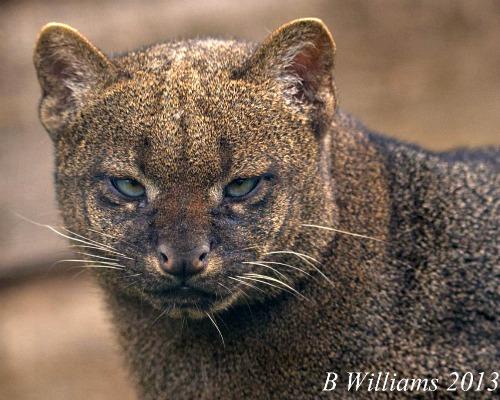
HB Length: 53-76 cm (21-30″ )
Tail Length: 31-52 cm (12-20″ )
Height: 25-30 cm (10-14″ )
Weight: 3-7 kg (6.6-15 lbs)
Pop. Trend: Decreasing
Jaguarundi Herpailurus yaguarondi are one of the strangest looking of the small cats. Their slender, elongated bodies, small flattened heads, and long tails are more reminiscent of an otter than a cat. The short, smooth, unmarked coat shows three distinct colour phases: black, brownish grey, and a reddish brown phase known as the Eyra. The dark or grey pelage is associated mostly with wet, dense forests, whereas the red coat colour is associated with dry, open habitats. The blackish phase is more associated with rainforests. Nevertheless, all color phases can be found in all environments.
The ears are short and rounded, and this is one of the few cat species not to have a contrasting colour on the backs of the ears. Their eyes are small, set closely together, and are light amber or brownish in colour. The legs are short and slender, and the tail is long and tapered.
These cats are not closely related to the other small South American cats. Genetic analysis has grouped them more closely to the Cougar Puma concolor and the Cheetah Acinonyx jubatus. Like the Cheetah, Jaguarundi cannot retract the claws of their hind paws completely, and their behaviour resembles the Puma more than other medium-sized cats in the same habitat. Their ancestors probably evolved in Eurasia and migrated to the Americas via the Bering land bridge about 16,000 years ago.
Distribution
A cat of the lowlands not generally found above 2,000 metres, Jaguarundi range from northern Mexico through Central America down to central Argentina.
A radio telemetry study in Belize found the home ranges of these cats to be huge. Territories varied considerably between males and females, measuring 88 – 100 km² for each of two adult males and 13 – 20 km² for an adult female. The ranges of the males overlapped less than 5%. Both sexes used different and widely spaced portions of their ranges for irregular periods of time, rather than making regular boundary patrols.
More:
https://wildcatconservation.org/wild-cats/south-america/jaguarundi/

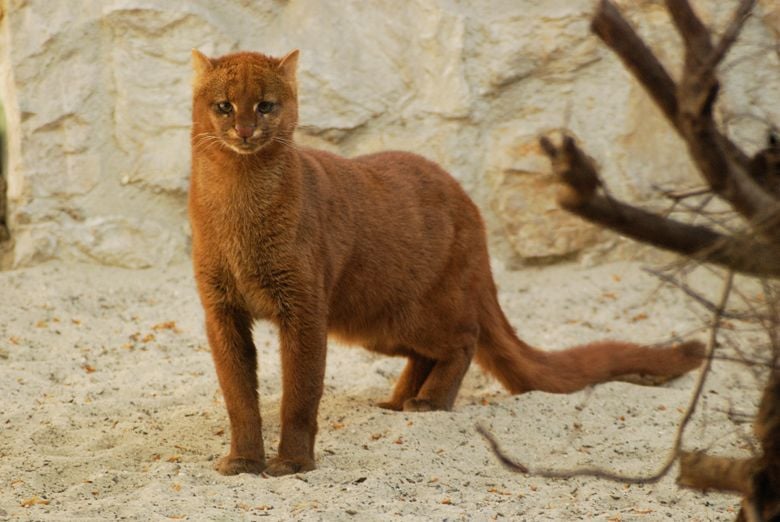




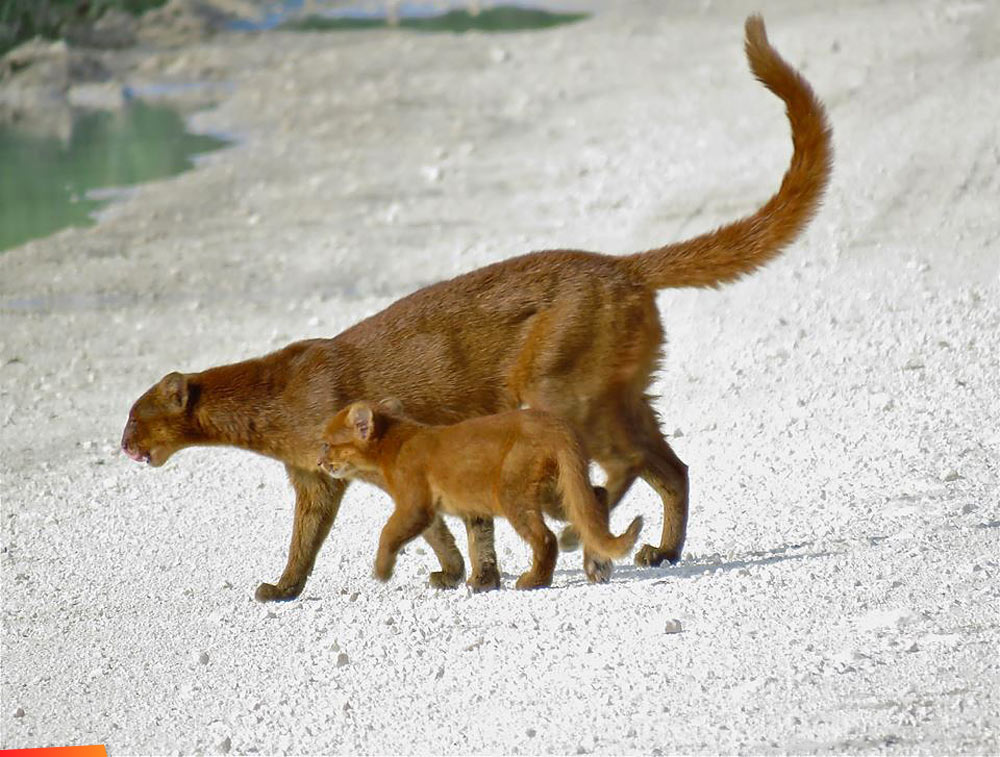

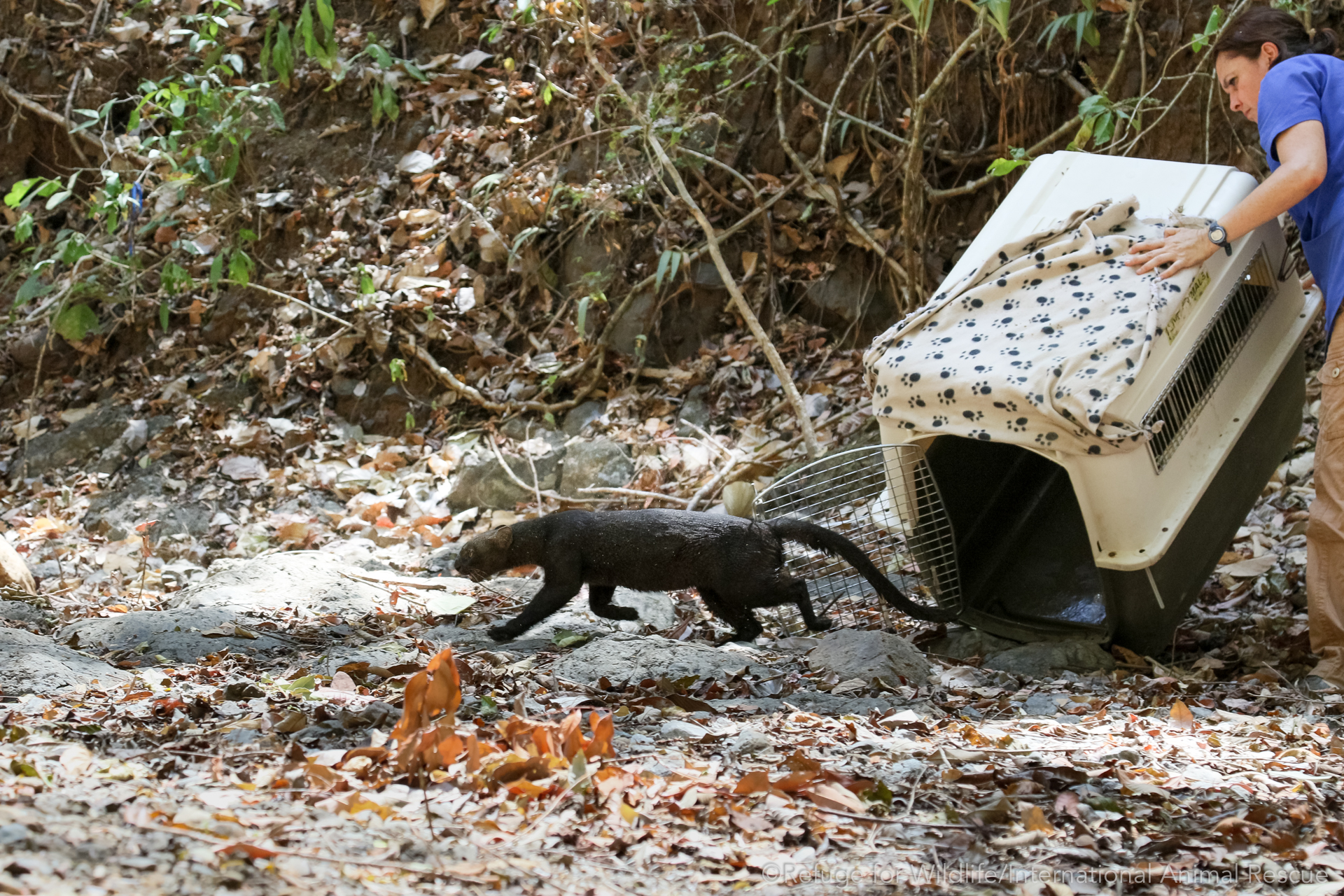
Jaguarundi Released
by IAR Costa Rica Education, Latest NewsJune 24, 2020
Some amazing news! After months of expert care provided by the veterinary staff at Centro de Rescate y Santuario Las Pumas, the Jaguarundi rescued from Playa Guiones was released!
Back in October, our emergency rescue team received a call from a local resident reporting a jaguarundi (Herpailurus yaguarondi) that was stuck in a fence in Playa Guiones. The jaguarundi had been traveling between habitat when it was scared by barking dogs and ran headfirst into the chainlink, getting his head stuck. The Bomberos de Nosara assisted us with the difficult rescue which required bolt cutters to free the jaguarundi from the fence.
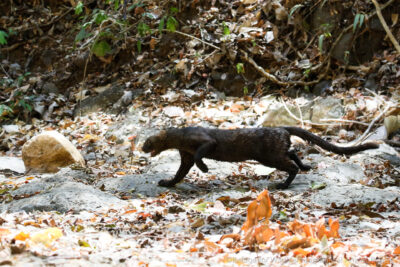
Unfortunately, the jaguarundi had suffered a severe injury from the accident and was not able to properly move his hind limbs. At the Refuge wildlife clinic, we did several tests, including an x-ray and blood work that showed no physical reason for the movement impairment. More tests and longer-term care were required to treat neurological symptoms. We immediately transported him to Las Pumas, a rescue center that specializes in wild cats, where he received the best comprehensive care from the experts in the field.
Thanks to the fantastic dedication of our friends at Las Pumas, the jaguarundi regained the total function of his hind legs after several months of specialized care. We were delighted to be invited to the release which took place on the Refuge for Wildlife property in San Juanillo. It was a thrilling moment when, after an hour of trekking through the forest to find the best location for his new home, the jaguarundi sprinted to freedom!
https://www.iarcostarica.org/jaguarundi-released-2/
Bernardo de La Paz
(49,002 posts)abqtommy
(14,118 posts)I'm bookmarking to my browser Photos Folder! ![]()
marybourg
(12,631 posts)National Monument. about 30 years ago. Its tracks had been noted by biologists, but they never saw the animal.